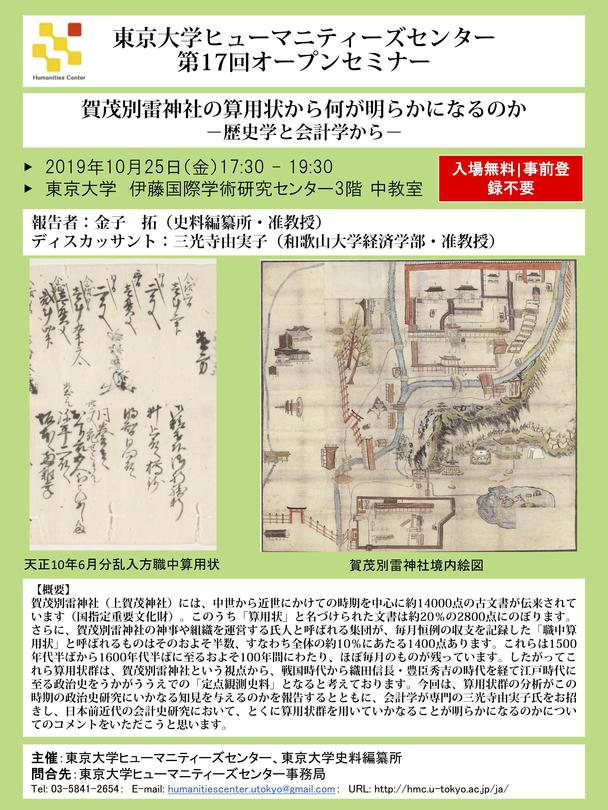Insights Derived from the Sanyojo of Kamowakeikazuchi Shrine—Based on Studies of History and Accounting

- Date: 25th October 2019, 17:30-19:30
- Venue: Ito International Research Center, The University of Tokyo
- Speaker: Hiraku Kaneko (Historiographical Institute, The University of Tokyo)
- Discussant: Yumiko Sankoji (Fuculty of Economics, Wakayama University)
About 14,000 historical documents (designated an important cultural property of Japan), mainly spanning the period from medieval times to the early modern era, have been handed down at Kamowakeikazuchi Shrine (commonly known as Kamigamo Shrine). As many as 2,800 (20 percent) of these are sanyojo (documents concerning the settlement of accounts). Of these, about half (1,400, or 10 percent of the total) are shokuchusanyojo, documents in which regular monthly income and expenditures were recorded by the Kamigamo Shrine ujihito (people who manage shrine rituals and organization). The shokuchusanyojo of almost every month for the century-long period from the mid-1500s to the mid-1600s have survived. Therefore, from the perspective of Kamigamo Shrine, these sanyojo are considered "historical materials of fixed point observation" in investigating political history from the Warring States period through the eras of Nobunaga Oda/Hideyoshi Toyotomi and up to the Edo period. In this study, we will report on the types of knowledge that analysis of the sanyojo provides in research on the political history of this period. Additionally, guest Yumiko Sankoji, a specialist in accounting studies, will comment on the various insights gained in research on accounting history in pre-modern Japan, particularly through the use of sanyojo.


